Singapore Fried Noodles
As an Amazon Associate and member of other affiliate programs, I earn from qualifying purchases.
I made a festive version of Singapore Fried Noodles to commemorate November 1st and it reminded me of the food we prepared in the Philippines to honor our departed.
I can’t forget how the hot tropical weather pierced through our bodies. The sun was scorching hot. It was the middle of the day. The narrow highway had cars coming from all points. Traffic was a standstill. Regular midsized cars and their rumbling engines inched slowly on the road, next to street pedicabs, multi-colored 12-passenger jeepneys, rickety pickup trucks. There were street vendors on the curb and sidewalk stands. There were flower vendors going from vehicle to vehicle, on foot, hawking their wares.

In our own car, my sister and I, as kids then, were seated quietly, with our parents. Food was packed in a cooler at the trunk. Right next to it were floral arrangements and sets of large candles. Our car inched slowly through the traffic. As we got closer to our destination, the cacophony of noises grew louder. Modern pop music blasted through speakers. Drivers impatiently honked their cars. Loud voices could be heard. The smell of burning candles & the scent of flowers was all around.
Thousands of Filipinos go to their family tombs on November 1. Cemeteries in the Philippines have mausoleums. Each one has generations of families buried in one plot. Filipinos adorn their family burial sites with flowers, and candles. Food is brought on site, and eaten like one is at a picnic. It is an all day event, which starts a few weeks before when grave sites are cleaned up.
Our relatives traveled from Manila, and put up with the heat and traffic for 3 hours to get to our family’s mausoleum in our hometown, Tarlac. It was an annual event. We’d sit by the family tombs. My aunt led the prayers, for the departed.
At the cemetery, we’d run into old friends, who were also visiting their own grave sites. Stories were shared. These were customs and traditions we practiced on November 1st, when I was growing up in the Philippines. Coming together at our ancestors’ gravesites on this day was like a big social celebration for Filipinos. It was always a festive day.
My husband recalls as a young boy, how he and his cousins would go grave-hopping and collect candle wax from different gravesites.As kids then, they used to play around with those collected candle wax, form them into little balls and goof around.
Filipinos love celebrations. The ‘Day of the Dead’ on November 1st was always a reason to cook a lot of food and have family reunions.
Even if I’m far away from the Philippines I think of those traditions on November 1st. Prayer and remembrance is constant, and it is the first thing I do to start that day.
Today in my American kitchen, I couldn’t help but get caught up in my memories. I wanted to celebrate. I prepared “fiesta fare” which I cook when we’re expecting guests. Even if no one was coming, I cooked a noodle dish for November 1st. Noodle dishes are often considered a special-occasion dish for guests. I chose a Singapore Fried Noodle dish. The good thing about Asian dishes is that ingredients are always “a little of everything”. There was a little meat, a little shrimps, a little vegetables, some broth, garnishings and noodles.
The rich combination of garlic, onions, celery, ginger gave off an inviting scent. I added the ground pork and shrimps. The sizzling hiss from the pan was irresistible. And finally, mixing in the vegetables, noodles and seasonings completed the dish. The aromatic noodle dish flavors brought back memories of how we celebrated November 1st back in the Philippines. What we call “Araw ng mga Patay” (Day of the Dead) was all about celebrating the living. It meant family, good food and good times.
Singapore Fried Noodles
Equipment
- Large Wok or Skillet
Ingredients
- 1 pound Chinese wheat noodles, pre-boiled, from Asian markets
- 1/2 pound sotanghon (cellophane) noodles pre-soaked in water for 20 minutes
- 1/2 pound ground pork
- 1/2 pound fresh shrimps, heads removed, peeled and deveined
- 3 Tablespoons vegetable oil
- 2 cloves garlic, minced
- 1 knob (1 inch) fresh ginger, peeled, minced
- 1 whole onion, chopped
- 2 stalks celery chopped
- 1 Tablespoon patis (fish sauce)
- 1 cup chopped carrots
- 1 Tablespoon canned salted black beans drained
- 1 cup chicken broth
- 1 cup sliced green beans, in 1-inch pieces
- 1 cup shredded Napa cabbage
- 1 pinch salt
- 1 teaspoon freshly ground black pepper
- 1 whole large egg, cooked scrambled, for garnish
- 2 stalks scallions, chopped for garnish
- 1 Tablespoon fried chopped garlic for garnish
Instructions
- 1. Pre-soak in water: Sotanghon noodles for about 15 minutes to soften. Do not soak longer than this time or cellophane noodles will disintegrate.The fresh Chinese noodles from the Asian grocery are already pre-boiled, wash and drain them. Then blanch in boiling water, in a medium-sized stockpot for 10 seconds. Do not let the noodles blanch too long or they will stick and clump together. Drain noodles and set aside.
- 2. In a large wok or skillet, heat the vegetable oil over medium high heat. Add the garlic, onions, ginger, celery. Stir fry till onions and celery are soft, for about 2 minutes. Add the black beans and mix.
- 3. To the wok mixture, add the ground pork and stir fry for about 3 minutes till meat turns from pink to brown. Add the shrimps and continue to stir fry for 5 minutes.
- 4. Add the fish sauce and chicken broth. Lower the heat and simmer for 5 minutes more. Let the flavors blend well.
- 5. Add the vegetables: carrots, green beans. Add the cabbage at the last 5 minutes just before adding the noodles.
- 6. Drain the sotanghon noodles and discard liquid. Together with the Chinese noodles, add both to the skillet and blend together with the rest of ingredients. Stir fry for 1 to 2 minutes. Season with salt and pepper.
- 7. Serve warm, garnished with scrambled egg, scallions, and crisp garlic bits.
- COOK’S COMMENTS: There are many varieties of noodles available. There is no strict rule as to what noodles to use in this dish. The beauty of Asian noodle dishes is it is a very forgiving dish. Asian cooking is based on what is available in your backyard or pantry. Use meat, vegetables and noodles you have on hand or those that you can easily buy in major groceries near you. Personally, I buy several types of noodles when we make our weekly trip to the Asian grocery.
Nutrition
Notes on Nutrition: The nutrition information provided is an estimate and will vary based on cooking methods and specific brands of ingredients used.
Copyright Notice: Hello, Friends! Please DO NOT LIFT OR PLAGIARIZE my original recipe, stories, photos or videos. All the images and content on this blog are COPYRIGHT PROTECTED and owned by my media company Besa-Quirino LLC. This means BY LAW you are NOT allowed to copy, scrape, lift, frame, plagiarize or use my photos, essays, stories and recipe content on your websites, books, films, television shows, videos, without my permission. If you wish to republish this recipe or content on media outlets mentioned above, please ASK MY PERMISSION, or re-write it in your own words and link back to my blog AsianInAmericaMag.com to give proper attribution. It is the legal thing to do. Thank you. Email me at [email protected]

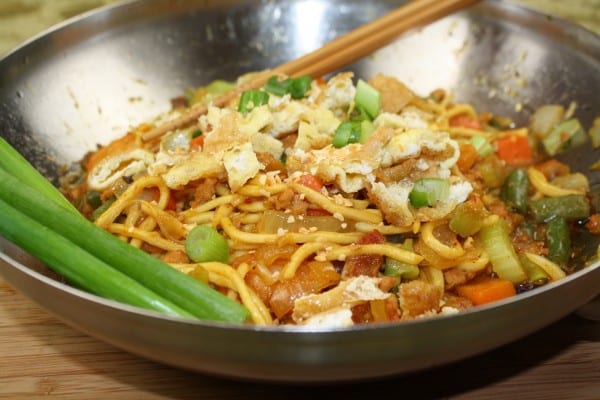
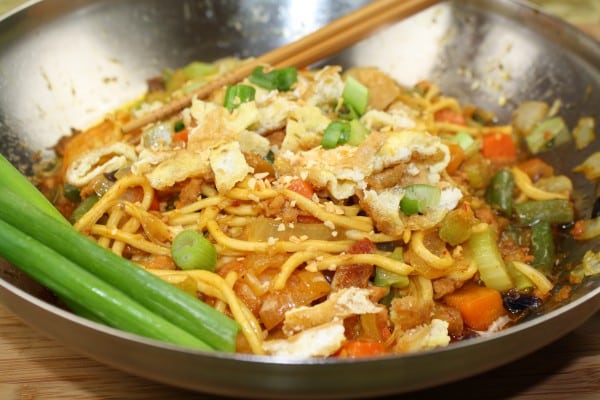

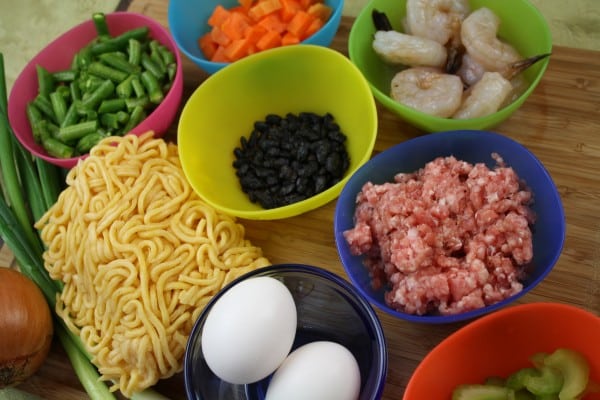

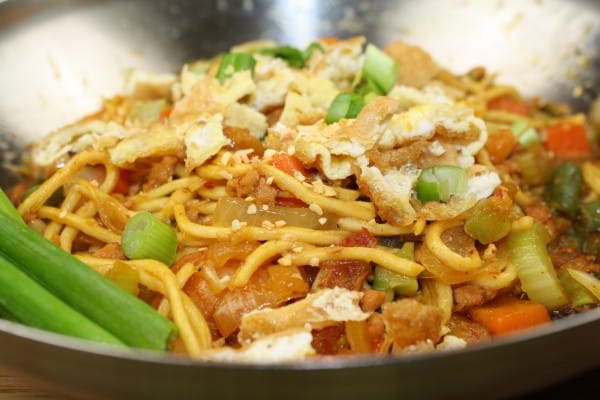

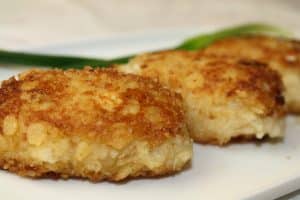



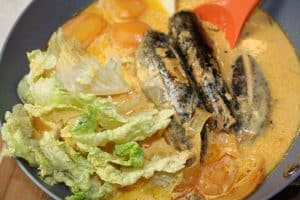
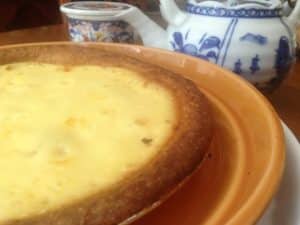
Oh my…those noodles are amazing. I could eat a big helping of that right now!
Great stories, too!
Every Undas (as we call the day of the dead), we cook kakanin- bilo-bilo, inangit, suman. Of course, pansit is always present. My mom would make a combination of canton and bihon noodles, with lots of sahog – pork, chicken liver and giblet, chicken, topped with lots of veggies as well.
Stay warm and snug.
What a perfect dish to make, so full of vibrant beautiful colors! I lived in Tucson, AZ for 15 yrs, The Day of the Dead was a huge celebration:-) Thank you for sharing all the fun information:-) Hugs, Terra
Thanks, Terra! Sounds like such a colorful fiesta! You should write about it. Glad you stopped by!
What a fabulous story! I could almost smell the garlic and other spices coming from my computer :-). I had no idea Day of the Dead was celebrated by Filipinos, but really loved reading your story. These noodles are going on my list of recipes to make because they look fabulous too!
Thanks, EA! This is a superb noodle dish. Enjoy it.
Happy All Saints/Souls Days! This looks so good!
Thanks, Emily ! Nice of you to stop by!